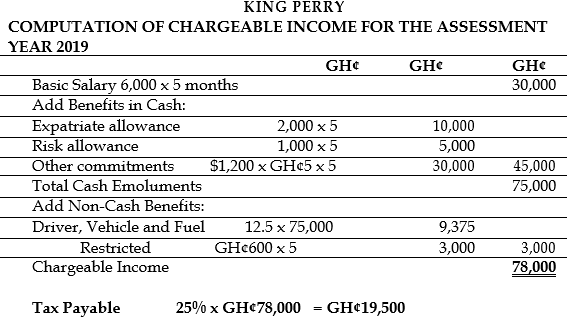May 2020 Q3 b.
It is necessary to find out whether an activity carried out by an individual amount to a profession (contract for service) or employment (contract of service). From taxation point of view there is the existence of employment where there is a contract of service.
Required:
What are the characteristics of contract of service? (6 marks)
View Solution
- The worker is controlled by their employer. They must perform the tasks they are instructed to by a line manager according to their job description. In a contract of service, the employer normally enjoys the power of control over the work of the servant and the servant is bound to obey the orders/instructions of the master. The matter of control by the employer over the employee has been emphasized by the Courts as being the important factor in deciding whether the relationship of employer and employee exists.
- The worker is expected to work at a specific place during specific hours on specific days. For contract for service (i.e. an independent contractor), on the other hand, undertakes to produce the required result, but in the actual execution of the job to produce the result, he is not under the order or control of the person for whom he executes that work. He is free to use his discretion. Do note that a contract of service only comes into effect when the employee turns up for work on the appointed starting date, as stipulated in the agreed terms of the contract.
- A contract of service has a formal contract which defines the employer-employee relationship, including the terms and conditions of employment. The contract must include certain terms and essential clauses, such as hours of work and job scope. The agreement can be in writing, verbal, expressed or implied. It can be in the form of a letter of appointment or employment, or an apprenticeship agreement. However, to minimise disputes on the agreed terms and conditions, the contract should be in writing.
- Employees have statutory rights regarding how they can be asked to leave their employment. Employees have statutory rights to holiday pay, sick pay, maternity and paternity rights and redundancy payments.
- Economic considerations. Is the business carried out on the person’s own account, or is it for the employer? If it is for the employer, then there is contract of service. Can the person share in profit or be liable to any risk of loss? If the person cannot share in the profits and risks of running the business, then there is contract of service. Where liability for any errors or defects in work completed for clients, is born by the employee, and this may expand to personal liability (assuming the contractor is a director), then there is contract for service.
- In a contract of service, there will be typically a clause that provides for situations where either the employer or employee can terminate the contract, and the applicable procedures for the termination of the contract. A contract of service may be terminated if the employee decides to resign, the employer dismisses the employee, or the contract terms have expired. A contract for service may be terminated if the performance of the service provider is not satisfactory, or if the performance of the project or service is disrupted due to unforeseen circumstances, or it becomes impossible to continue on a project that is already in progress.
- The next test is the Integration Test. The test is whether the work being performed under a contract is integral to the operation of the business structure as a whole, or it is only works on the side of the main business. In this case, it is stated that an employee is a person who is integrated with others in the work place or business even though the employer may not necessarily exercise a detailed control over what the employee does.
- An individual’s employment status will affect their entitlement to certain social welfare benefits (e.g. social security contribution by employees, workers’ pension fund, old-age contributory pension and disability benefit, marriage responsibility allowance, child education benefits etc).
(Any 4 points @ 1.5 marks each = 6 marks)

